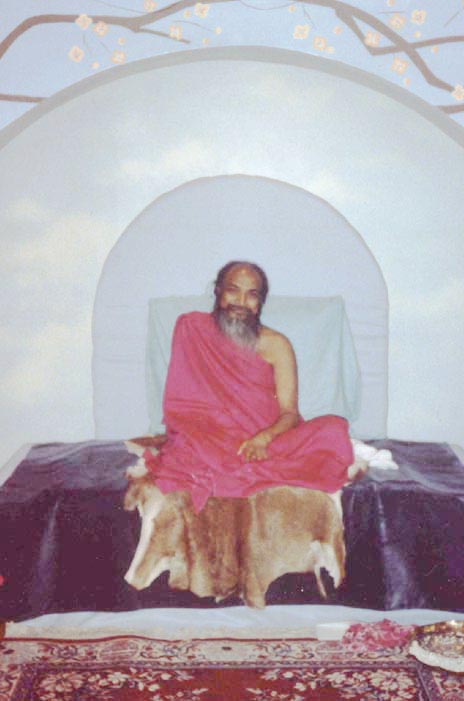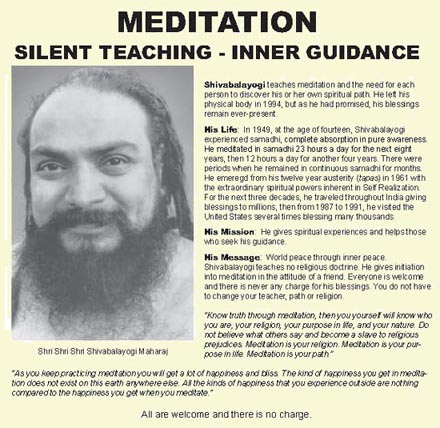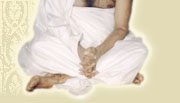PROGRAMS HOME PAGE | NEXT PAGE

“There is meditation and there are bhajans. People do come and ask Swamiji about their health. They ask for healing. Then you have bhava samadhi. All these are in the programs. Anybody can come and see that. The same programs are held all over the world.”
“The same things happened during the time of Christ. Christ started teaching this type of meditation. He also employed astral bodies to induce bhava samadhi during bhajans.”
![]() Read
more about bhava samadhi: the "Bhava Leela" chapter from Shivabalayogi’s 1981 biography, Spiritual
Ministration.
Read
more about bhava samadhi: the "Bhava Leela" chapter from Shivabalayogi’s 1981 biography, Spiritual
Ministration.
From 1963 until his mahasamadhi in 1994, Shivabalayogi traveled throughout India, then later, in Sri Lanka, England and the United States. Everywhere he conducted public programs consisting of darshan, meditation and bhajans. Sometimes in India, when there were hundreds interested in receiving initiation, there were several meditation classes in the afternoon, and then in the evening.
As the decades passed, programs at his main ashrams in Adivarapupeta and Bangalore consisted only of darshan and bhajans. In the West, his programs consistently included darshan, about an hour of meditation, followed by about an hour of bhajans.
Shivabalayogi did not lecture or give discourses. He taught in silence, through his mere presence, darshan, whether in his own physical body, or an astral presence.
“A yogi always has to be silent. Only by being silent can he control.”
Meditation classes, as Swamiji sometimes referred to them, consisted of Shivabalayogi’s initiation into meditation, followed by forty-five minutes to an hour of meditation practice.
“It is Swamiji's duty to help you in meditation.”
Following the meditation, Swamiji had his instructions on meditation read out loud, and each person received a piece of vibhuti, ash which he had blessed.
Following the meditation, devotees would play bhajans, lively songs in praise of any of the many forms of the divine. During the music, Shivabalayogi would evoke various degrees of bhava, divine trance.
“Samadhi is through tapas and bhava is the presence of somebody through the astral body. Bhava is the beginning for samadhi and tapas.”
Individual Darshan and Prashad
Shivabalayogi would stay as long as needed to give each person the opportunity to come close to him, ask for individual blessings, or simply bow.
Often those who organized the program, knowing that it was
important to Shivabalayogi that everyone receive some prashad,
distributed some to everyone present.
 Shivabalayogi insisted that there be no fee or any other
charge to attend his programs or to receive his blessings.
Shivabalayogi insisted that there be no fee or any other
charge to attend his programs or to receive his blessings.
“That is business. It is not yoga. The people who do business cannot reach God. There is no need to pay money to reach God. Money is not required. The guru can get his food anyway. There is no need to charge money for that.”
Mahashivaratri (the great night of Shiva), Shivabalayogi’s birthday (January 24), and tapas anniversary (August 7) are occasions when ashrams and devotees celebrate with special functions of all-night bhajans, homa (fire sacrifices), puja (ritual), and mass feeding (anadanam). Other special occasions include Shivabalayogi’s mahasamadhi (March 28) and Parvatamma's mahasamadhi (observed on August 15).
PROGRAMS HOME PAGE | NEXT PAGE



